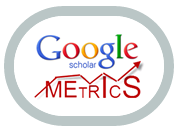Antropônimos E Topônimos Nas Traduções Francesa E Estadunidense De Esaú E Jacó, De Machado De Assis
DOI:
https://doi.org/10.47456/pl.v12i31.38728Keywords:
Estudos de tradução., Antropônimos., TopônimosAbstract
This article focus on the treatment agreed to anthroponyms and toponyms in two translations of Esaú e Jacó (1904), a novel by Machado de Assis: in French (performed by Françoise Duprat) and in US-American English (performed by Elizabeth Lowe). Dating back to the works of Cicero (106 BC – 43 BC), translation practice has been analyzed and discussed by translators and/or translation theorists (linguists, philosophers, psychoanalysts, etc.): from the translation act to the questioning about the [im]possibility of the translation itself. Although such points seem to have been overcome in terms of theoretical discussion, it is necessary, however, to allude to known difficulties of translation and, within the scope of those that are contained in a vast list, the difficulties associated with socio-historical and cultural issues are highlighted. This article is focused particularly in anthroponyms (names of people) and toponyms (names of places). The genesis of this work lies in the current questions: should proper names be translated? How do translators behave when translating this class of names? What motivations lead a translator to translate or not a proper name? To encourage this discussion, this article will carry out a case study, preceded by some questions inherent to discussions in translation theory.
Downloads
References
AMADO, Jorge. Bahia de tous les saints. Tradução de Michel Berveiller e Pierre Hourcade. Paris: Gallimard. 1938.
ASSIS, Machado de. [1904]. Esaú e Jacó. Rio de Janeiro: Editora Nova Aguilar. 1994.
ASSIS, Machado de. Esaü et Jacob. Tradução de Françoise Duprat. Paris: Éditions A. M. Métailié. 1985.
ASSIS, Machado de. Esau and Jacob. Tradução de Elizabeth Lowe. Nova York: Oxford University Press. 2000.
BERMAN, Antoine. La traduction et la lettre ou l’auberge du lointain. Paris: Seuil, col. “L’ordre philosophique”. 1999.
BERMAN, Antoine. L’Épreuve de l’étranger. Paris: Gallimard, col. “Tel”. 2021.
CARY, Edmond. Comment faut-il traduire ? Lille: Presses universitaires de Lille. 1985.
DELISLE, Jean. L’analyse du discours comme méthode de traduction. Ottawa: Éditions de l’Université d’Ottawa. 1984.
DICK, Maria Vicentina de Paula do Amaral. Toponímia e antroponímia no Brasil. São Paulo: Arquivo do Estado. 1990.
GAUTIER, Théophile. A morta apaixonada. In. COSTA, Flávio Moreira (Org.). Contos de vampiros: 14 clássicos escolhidos. Trad. Celina Portocarrero. Rio de Janeiro: Agir Editora, col. “Pocket ouro”. 2009.
GONÇALVES, Luís Carlos Pimenta. Traduction de Madame Bovary au Portugal entre le XIXe et le XXIe siècle. Synergies Portugal, n. 8, p. 55-68, 2020.
LADMIRAL, Jean-René. Traduire: théorèmes pour la traduction. Paris: Gallimard, col. “Tel”. 1994.
LADMIRAL, Jean-René. Sourcier ou cibliste, les profondeurs de la traduction. 2ª. ed. Paris: Les Belles Lettres, col. “Traductologiques”. 2015.
RÓNAI, Paulo. As armadilhas da tradução. In: RÓNAI, Paulo. A tradução vivida. Rio de Janeiro: Educom. 1976.
RÓNAI, Paulo. Problemas gerais da tradução. In: PORTINHO, Waldívia Marchiori (org.). A tradução técnica e seus problemas. São Paulo: Álamo. 1983.
Downloads
Published
How to Cite
Issue
Section
License
Copyright (c) 2022 PERcursos Linguísticos

This work is licensed under a Creative Commons Attribution-NonCommercial-NoDerivatives 4.0 International License.
O autor de submissão à Revista PERcursos Linguísticos cede os direitos autorais à editora da revista (Programa de Pós-Graduação em Linguística - UFES), caso a submissão seja aceita para publicação. A responsabilidade do conteúdo dos artigos é exclusiva dos autores. É proibida a submissão integral ou parcial do texto já publicado na revista a qualquer outro periódico.
Os trabalhos aqui apresentados utilizam a licença Creative Commons CC BY: Attribution- NonCommercial- NoDerivatives 4.0 International. Para mais informações, verificar: https://creativecommons.org/licenses/by-nc-nd/4.0/
Os trabalhos na revista são arquivados pelo sistema Rede de Preservação PKP (PKP PN) e LOCKSS









